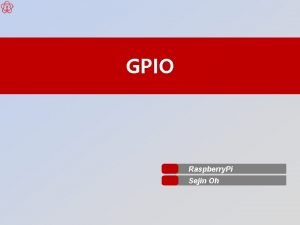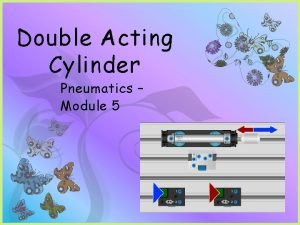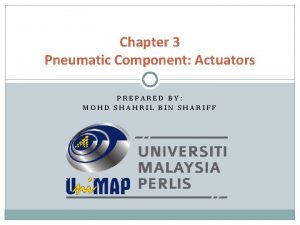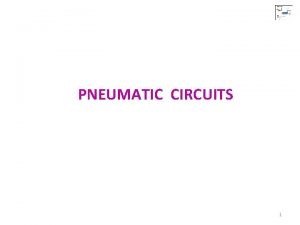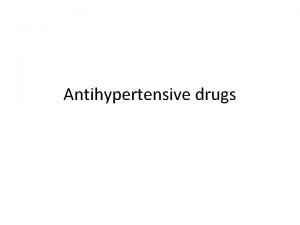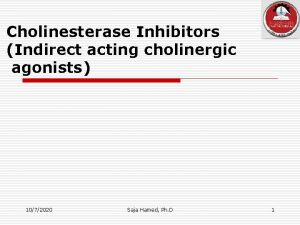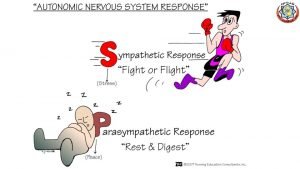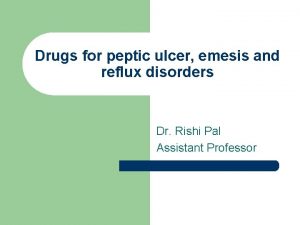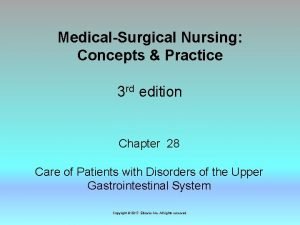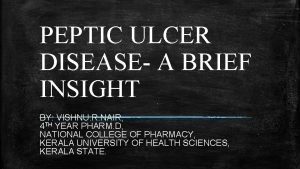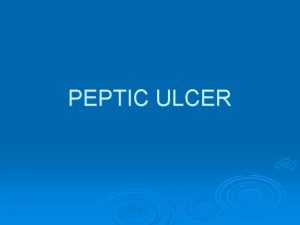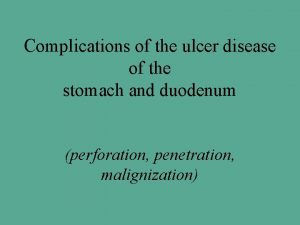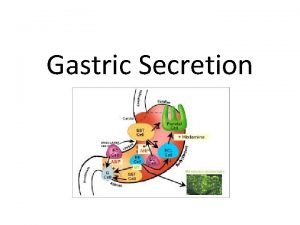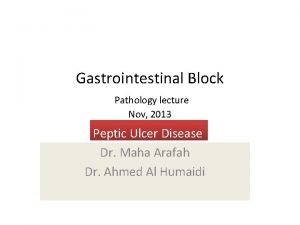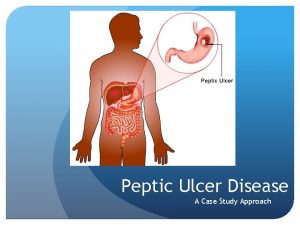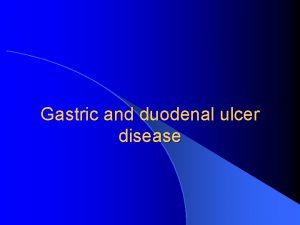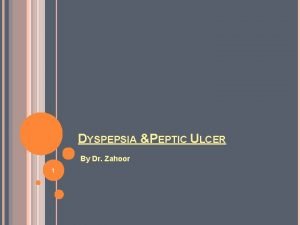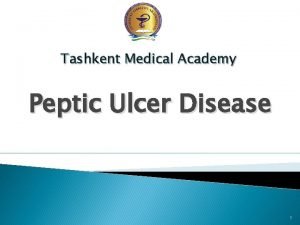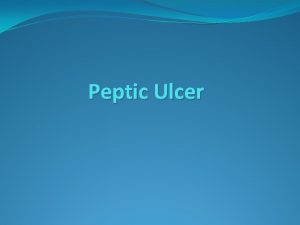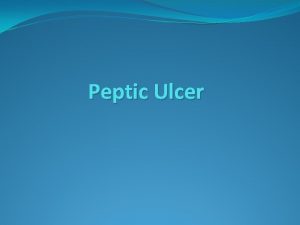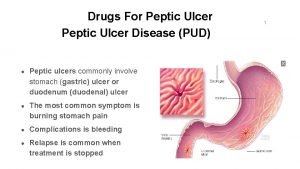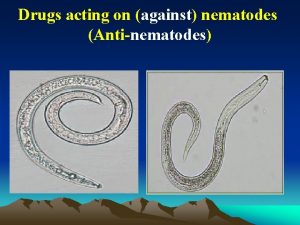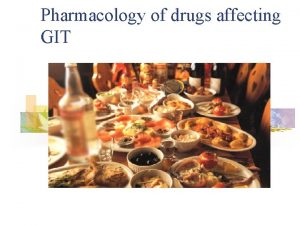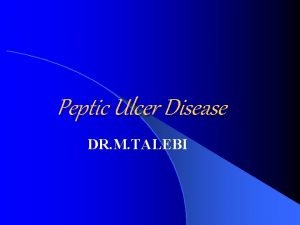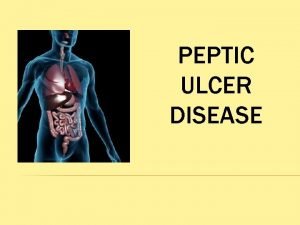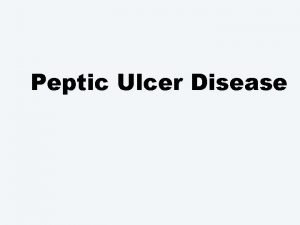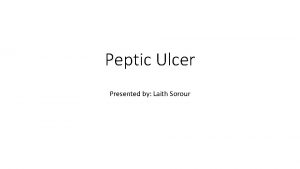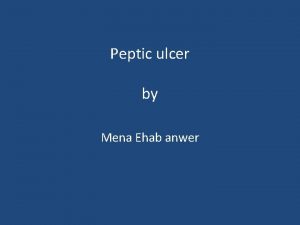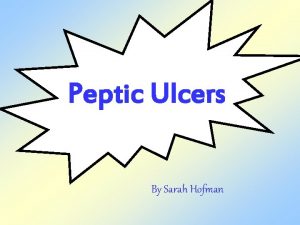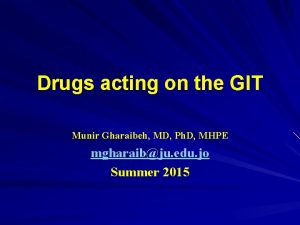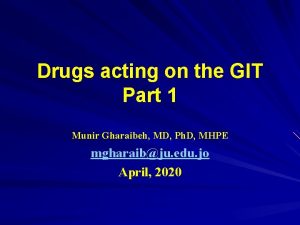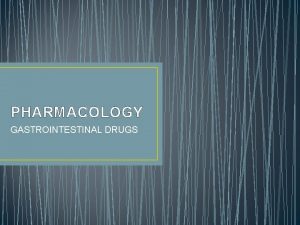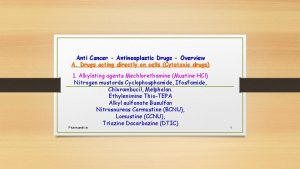Drugs acting on the GIT Drugs for peptic
























![• Systemic absorption of sodium bicarbonate [Na. HCO 3] can produce transient metabolic • Systemic absorption of sodium bicarbonate [Na. HCO 3] can produce transient metabolic](https://slidetodoc.com/presentation_image_h2/96d06a819a608bb34e482e85f988fdbb/image-25.jpg)







- Slides: 32

Drugs acting on the GIT.

• Drugs for peptic ulcer. • Antiemetic drugs. • Drugs for constipation. • Antidiarrhial drugs.

Acid-peptic diseases • include gastroesophageal reflux, peptic ulcer (gastric and duodenal), and stress-related mucosal injury. • ulceration arise when the caustic effects of aggressive factors (acid, pepsin, bile) overwhelm the defensive factors of the gastrointestinal mucosa (mucus and bicarbonate secretion, prostaglandins, blood flow, and the processes of restitution and regeneration after cellular injury).

v Drugs used in the treatment of acid-peptic disorders may be divided into two classes: • agents that reduce intragastric acidity. • agents that promote mucosal defense.

Drugs used to treat peptic ulcer disease • two main causes of peptic ulcer disease: 1. infection with gram-negative Helicobacter pylori. 2. the use of nonsteroidal anti-inflammatory drugs (NSAIDs). • Increased hydrochloric acid (HCl) secretion and inadequate mucosal defense against gastric acid also play a role.

• Treatment approaches include: 1. eradicating the H. pylori infection. 2. reducing secretion of gastric acid with the use of PPIs or H 2 -receptor antagonists. 3. providing agents that protect the gastric mucosa from damage, such as misoprostol and sucralfate.

A. Antimicrobial drugs • Eradication of H. pylori results in rapid healing of active ulcers and low recurrence. • possible with various combinations of antimicrobial drugs. • triple therapy consisting of a PPI with amoxicillin (metronidazole may be used in penicillin-allergic patients) plus clarithromycin therapy of choice. • Quadruple therapy of bismuth subsalicylate, metronidazole, and tetracycline plus a PPI is another option.

B. H 2 -receptor antagonists and regulation of gastric acid secretion • Gastric acid secretion is stimulated by acetylcholine, histamine, and gastrin. • The receptor-mediated binding of acetylcholine, histamine, or gastrin results in the activation of protein kinases, which in turn stimulates the H+/K+adenosine triphosphatase (ATPase) proton pump to secrete hydrogen ions. • By competitively blocking the binding of histamine to H 2 receptors, these agents reduce the secretion of gastric acid.


• The four drugs used cimetidine, ranitidine, famotidine, and nizatidine—potently inhibit (greater than 90%) basal, food-stimulated, and nocturnal secretion of gastric acid. • Cimetidine was the first histamine H 2 -receptor.

1. Actions: The histamine H 2 -receptor antagonists act selectively on H 2 receptors in the stomach, but they have no effect on H 1 receptors. They are competitive antagonists of histamine and are fully reversible.

2. Therapeutic uses: a. Peptic ulcers: healing of duodenal and gastric ulcers. • Patients with NSAID-induced ulcers should be treated with PPIs. b. Acute stress ulcers: These drugs are given as an intravenous infusion to prevent and manage acute stress ulcers associated with high-risk patients in intensive care units. c. Gastroesophageal reflux disease (GERD): Low doses of H 2 antagonists for over-the-counter sale, are effective for the treatment of heartburn (GERD).

4. Adverse effects: • Cimetidine act as a nonsteroidal antiandrogen and cause gynecomastia and galactorrhea (continuous release/discharge of milk). • confusion and altered mentation) occur primarily in elderly patients and after intravenous administration. • Cimetidine inhibits several cytochrome P 450 isoenzymes and can interfere with the metabolism of many other drugs, such as warfarin, phenytoin, and clopidogrel.

C. PPIs: Inhibitors of the H+/K+-ATPase proton pump • The PPIs bind to the H+/K+-ATPase enzyme system (proton pump) and suppress the secretion of hydrogen ions into the gastric lumen. • The available PPIs include, esomeprazole, lansoprazole, omeprazole, pantoprazole, and rabeprazole. • Omeprazole, esomeprazole, and lansoprazole are available over-the counter for short-term treatment of GERD.

1. Actions: • In the duodenum, it is converted to the active drug and forms a stable covalent bond with the H+/K+ATPase enzyme. • At standard doses, PPIs inhibit both basal and stimulated gastric acid secretion by more than 90.

2. Therapeutic uses: • The PPIs are superior to the H 2 antagonists in suppressing acid production and healing ulcers. • they are the preferred drugs for stress ulcer treatment and prophylaxis and for the treatment of GERD, erosive esophagitis, active duodenal ulcer, and pathologic hypersecretory conditions (for example, Zollinger- Ellison syndrome, in which a gastrinproducing tumor causes hypersecretion of HCl).

3. Pharmacokinetics: • All of these agents are effective orally. • PPIs should be taken 30 to 60 minutes before breakfast or the largest meal of the day. • Esomeprazole, lansoprazole, and pantoprazole are also available in intravenous formulations. • plasma half-life of these agents is only a few hours, they have a long duration of action due to covalent bonding with the H+/K+- ATPase enzyme. • Metabolites of these agents are excreted in urine and feces.

4. PPIs Adverse effects: • Omeprazole and esomeprazole may decrease the effectiveness of clopidogrel. • PPIs may increase the risk of fractures, particularly if the duration of use is 1 year or greater.

• Calcium carbonate, Calcium citrate is an effective option for calcium supplementation in patients on acid suppressive therapy. • Diarrhea and Clostridium difficile colitis may occur in community patients receiving PPIs. • Additional adverse effects may include hypomagnesemia and an increased incidence of pneumonia.

D. Prostaglandins • Prostaglandin E, , inhibits secretion of acid and stimulates secretion of mucus and bicarbonate. • A deficiency of prostaglandins is thought to be involved in the pathogenesis of peptic ulcers. • Misoprostol , an analog of prostaglandin E 1, is approved for the prevention of NSAID-induced gastric ulcers.

• Prophylactic use of misoprostol should be considered in patients who are taking NSAIDs and are at moderate to high risk of NSAID-induced ulcers, such as elderly patients and those with previous ulcers. • Misoprostol is contraindicated in pregnancy, since it can stimulate uterine contractions and cause miscarriage. • Dose-related diarrhea and nausea are the most common adverse effects and limit the use of this agent. Thus, PPIs are preferred agents for the prevention of NSAID-induced ulcers.


E. Antacids • Antacids are weak bases that react with gastric acid to form water and a salt to diminish gastric acidity. Because pepsin (a proteolytic enzyme) is inactive at a p. H greater than 4, antacids also reduce pepsin activity.

1. Chemistry: • Antacid products vary widely in their chemical composition, acid-neutralizing capacity, sodium content, palatability, and price. • Commonly used antacids are combinations of salts of aluminum and magnesium, such as aluminum hydroxide and magnesium hydroxide [Mg(OH)2]. • Calcium carbonate [Ca. CO 3] reacts with HCl to form CO 2 and Ca. Cl 2 and is also a commonly used preparation.
![Systemic absorption of sodium bicarbonate Na HCO 3 can produce transient metabolic • Systemic absorption of sodium bicarbonate [Na. HCO 3] can produce transient metabolic](https://slidetodoc.com/presentation_image_h2/96d06a819a608bb34e482e85f988fdbb/image-25.jpg)
• Systemic absorption of sodium bicarbonate [Na. HCO 3] can produce transient metabolic alkalosis. Therefore, this antacid is not recommended for longterm use.

2. Therapeutic uses: • Antacids are used for symptomatic relief of peptic ulcer disease and GERD, and they may also promote+ healing of duodenal ulcers. • They should be administered after meals for maximum effectiveness. [Note: Calcium carbonate preparations are also used as calcium supplements for the treatment of osteoporosis. ]

3. Adverse effects: • Aluminum hydroxide tends to cause constipation, whereas magnesium hydroxide tends to produce diarrhea. • Preparations that combine these agents aid in normalizing bowel function. • Absorption of the cations from antacids (Mg 2+, Al 3+, Ca 2+) is usually not a problem in patients with normal renal function; however, accumulation and adverse effects may occur in patients with renal impairment.

F. Mucosal protective agents • Also known as cytoprotective compounds, these agents have several actions that enhance mucosal protection mechanisms, thereby preventing mucosal injury, reducing inflammation, and healing existing ulcers. 1. Sucralfate 2. Bismuth subsalicylate:

1. Sucralfate: • This complex of aluminum hydroxide and sulfated sucrose binds to positively charged groups in proteins of both normal and necrotic mucosa. • By forming complex gels with epithelial cells, sucralfate creates a physical barrier that protects the ulcer from pepsin and acid, allowing the ulcer to heal.

2. Bismuth subsalicylate: • This agent is used as a component of quadruple therapy to heal peptic ulcers. In addition to its antimicrobial actions, it inhibits the activity of pepsin, increases secretion of mucus, and interacts with glycoproteins in necrotic mucosal tissue to coat and protect the ulcer.


 라즈베리 gpio
라즈베리 gpio Single acting cylinder function
Single acting cylinder function Rodless cylinder working animation
Rodless cylinder working animation Pantomimish
Pantomimish Double acting pneumatic cylinder circuit diagram
Double acting pneumatic cylinder circuit diagram Pharmacology of drugs acting on respiratory system
Pharmacology of drugs acting on respiratory system Antihypertensive drug classification
Antihypertensive drug classification Indirect acting cholinergic drugs
Indirect acting cholinergic drugs Direct vs. indirect cholinergic agonists
Direct vs. indirect cholinergic agonists Peptic ulcer diseas
Peptic ulcer diseas Triple therapy for peptic ulcer disease
Triple therapy for peptic ulcer disease Emetic example
Emetic example Ulcer anatomy
Ulcer anatomy Nursing management of peptic ulcer
Nursing management of peptic ulcer Patient counselling for peptic ulcer disease
Patient counselling for peptic ulcer disease Peptic ulcer definition
Peptic ulcer definition Turburculousis
Turburculousis Triple therapy for peptic ulcer disease
Triple therapy for peptic ulcer disease Contents
Contents Pathophysiology of peptic ulcer
Pathophysiology of peptic ulcer Peptic ulcer case study
Peptic ulcer case study Billroth ii anatomy
Billroth ii anatomy Arsas symptoms
Arsas symptoms Peptic ulcer disease
Peptic ulcer disease What causes ulcers
What causes ulcers Redogör för vad psykologi är
Redogör för vad psykologi är Borra hål för knoppar
Borra hål för knoppar Bris för vuxna
Bris för vuxna Mat för idrottare
Mat för idrottare Offentlig förvaltning
Offentlig förvaltning Jiddisch
Jiddisch Etik och ledarskap etisk kod för chefer
Etik och ledarskap etisk kod för chefer Datorkunskap för nybörjare
Datorkunskap för nybörjare
